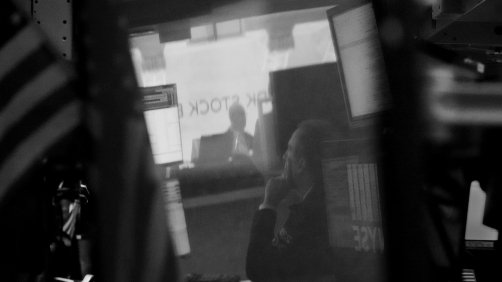“A weak China and hawkish Fed can’t co-exist for any sustained period,” a member shares in our community-powered Slack group. “The dollar eventually breaks all.” His concern? An ugly fourth quarter, similar to that of 2018. This has come up in my conversations as well.
Flashback: The S&P 500 went from being up 10 percent on the year on September 20, 2018, to flat by late November. A recovery seemed underway by early December, but then markets tumbled. The S&P 500 fell 16 percent through Christmas Eve.
Stocks ignored strong historical seasonality stats and patterns.
Why: Recycled fears like Brexit, trade tensions, Fed tightening, White House chaos, China’s slowdown, and the big increase in bond yields. All these factors likely influenced sentiment to some extent, adding to the volatility.
Moreover: President Trump tweeted “I am a Tariff Man” on December 4, backing off earlier claims of a trade-war truce with China. The Fed went ahead with a twenty-five basis point rate hike on December 19, the fourth increase of the year. And, on December 22, the government shutdown for the third time in 2018.
Treasury Secretary Steven Mnuchin decided to call Wall Street bank CEOs over the weekend, and, on December 23, stated that American banks had “ample liquidity” for borrowing, addressing a concern nobody had, but made some wonder if they should.
State of play: In contrast to 2018, China is gradually easing and the Fed is done hiking.
The July Politburo meeting marked an inflection point for policy, with the leadership pledging to “put a floor under the property sector, help indebted local governments heal, and boost consumer demand.”
Home sales by China’s top 100 developers increased by 17.9 percent from the prior month following a nationwide cut in down payment ratios; at least 19 provinces have refinanced local government debt, and Beijing is frontloading bond issuance to support infrastructure spending in the fourth quarter; and household spending and travel is finally starting to push back above pre-pandemic levels.
China’s September manufacturing PMI came in at 50.2, registering the first expansionary print since April. The non-manufacturing business activity index rose to 51.7. Retail sales increased by 5.5 percent year-over-year, up from 4.6 percent in August. Economic growth is finally bottoming out.
Meanwhile: Higher long-term Treasury yields avert the need for the Fed to tighten monetary policy any further. Since the last rate hike on July 26, the US 10-year bond yield has risen more than 100 basis points.
San Francisco Fed president Mary Daly said that the jump in yields is equivalent to a rate hike by the central bank. With higher risk premiums in the bond market, Dallas Fed president Lorie Logan indicated that it is doing “some of the work of cooling the economy for us, leaving less need for additional monetary policy tightening.”
We are likely close to the peak of this tightening cycle, according to Boston Fed president Susan Collins. “The risk of inflation remaining persistently high is more closely balanced with the risk of slowing activity more than needed to achieve price stability,” she said.
Context: The headline and core CPI inflation rates excluding shelter were both 2.0 percent on a year-on-year basis in September.
Shelter inflation jumped from a low of 1.5 percent in February 2021 to a peak of 8.2 percent in March 2023. It decreased to 7.2 percent in September and will sluggishly decline through 2024. This will keep inflation on a downward trajectory in the coming quarters.
ICYDK: The dollar peaked last year.
Since its top on September 28, 2022, at 114.7, the dollar index has dropped 7 percent despite a 120 basis point increase in the US 10-year yield. The dollar has barely increased by 1 percent since the most recent FOMC meeting in September, when Fed chair Jerome Powell surprised the market with his hawkishness.
Contrary to popular perceptions, the dollar is not on a rampage.
Our thought bubble: What if the shades of 2018 were present with us in 2022?
Details: The Russell 2000 index fell 26 percent in 2018 and 27 percent in 2022.
The dollar index rose 13 percent in 2018 and 20 percent in 2022. Oil dropped 40 percent from the highs in both 2018 and 2022. The BBB corporate spreads rose from a low of 1.17 in 2018 to 2.08 at the high. In 2022, the BBB spread rose from 1.17 to 2.09. It is 1.60 now.
In 2018, the price-to-earnings multiple of the S&P 500 fell by 20 percent. Last year, the valuation multiple dropped over 40 percent, almost matching the size of the contraction during the entire 2000–2002 crash. This was the fastest valuation correction in a tightening cycle.
Get smart: Lest we forget, the S&P 500 fell 35 percent in a single month in 2020, followed by a 27 percent dip over nine months in 2022. That equates to two declines of more than 20 percent during a three-year period. This is a statistical anomaly and it makes adopting a bullish stance much easier.







